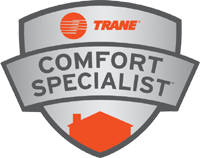How to Improve Indoor Air Quality in Your Home

June 07, 2021
Air pollutants are rarely visible except for dust and pet hair, but that does not mean they are not there. If you suffer from symptoms such as a stuffy or runny nose, constant sneezing, a scratchy throat, or watery eyes, then your home likely has poor indoor air quality.
While you can’t clean up the air completely, you can do a few things to reduce these air pollutants. Discover four ways you can improve indoor air quality in your home.
1. Control Indoor Air Pollutant Sources
According to the Environmental Protection Agency, there are 13 indoor air pollutant sources. Examples include cookstoves and heaters, biological pollutants, nitrogen dioxide, carbon monoxide, indoor particulate matter, wood smoke, and pesticides.
To improve your indoor air quality, eliminate these sources or reduce their emissions first. For instance, start by getting rid of volatile organic compounds such as aerosol sprays, cleaners, disinfectants, and paints since they emit pollutant gases.
You could also keep smoke (tobacco and wood) outside the home. For gaseous pollutants such as CO, install a carbon monoxide detector to detect your home’s CO levels that gas heaters and kerosene lamps emit.
Lastly, for indoor particulate matter such as dust, dirt, pet dander, and sand, clean your home regularly by vacuuming and decluttering.
The EPA affirms that source control is an effective and efficient method of improving your air quality since ventilation and air purifiers can increase your energy costs.
2. Improve Ventilation in Your Home
Air circulation is vital if you want to keep breathing fresh air. While outdoor air does contain pollutants, ventilation can help reduce indoor airborne pollutants. This is especially true when you use pollutant sources inside the home, like during cooking or painting.
You can improve ventilation and introduce outdoor air into your home in three ways: naturally, mechanically, and through infiltration.
Natural ventilation means opening up your windows and doors, while mechanical ventilation means using HVAC units. Most HVAC systems do not bring air into the house, except for the air-to-air heat exchangers, which remove excess humidity, odors, and pollutants generated indoors. Infiltration is where air flows from outdoors to indoors through air gaps, cracks, or joints in the walls, floors, windows, doors, or ceilings.
3. Install Air Cleaners
Air purifiers will not remove gaseous pollutants such as CO or nitrogen dioxide, nor does the EPA recommend using air cleaners to reduce levels of radon since the effectiveness of these air cleaners is uncertain. However, it can help with air particulates.
Install whole-house air purifiers with UV lighting or get a high-efficiency particulate air (HEPA) filter. According to EPA, HEPA filters can trap at least 99.97% of indoor air particulates, including dust, mold spores, and bacteria. As for cleaners with UV lighting, the in-duct system has a UV light bulb that emits vaporized hydrogen, killing biological pollutants, including germs and viruses.
4. Regulate Humidity
Excess humidity encourages mold and mildew growth that contributes to biological pollutants. To control humidity levels in your home, use a dehumidifier to help prevent moisture-related issues and curb the growth and spread of allergens, thereby improving air quality.
Also, avoid adding excess moisture in your home by not overwatering your indoor plants, checking for leaky plumbing, and emptying drip pans in your HVAC unit.
A good flow of quality indoor air is essential in every home. If you are unsure about the air quality of your home, request service today; we will be sure to evaluate your home's air quality. We look forward to helping you with your indoor air quality needs. Please let us know what questions and concerns you may have.




